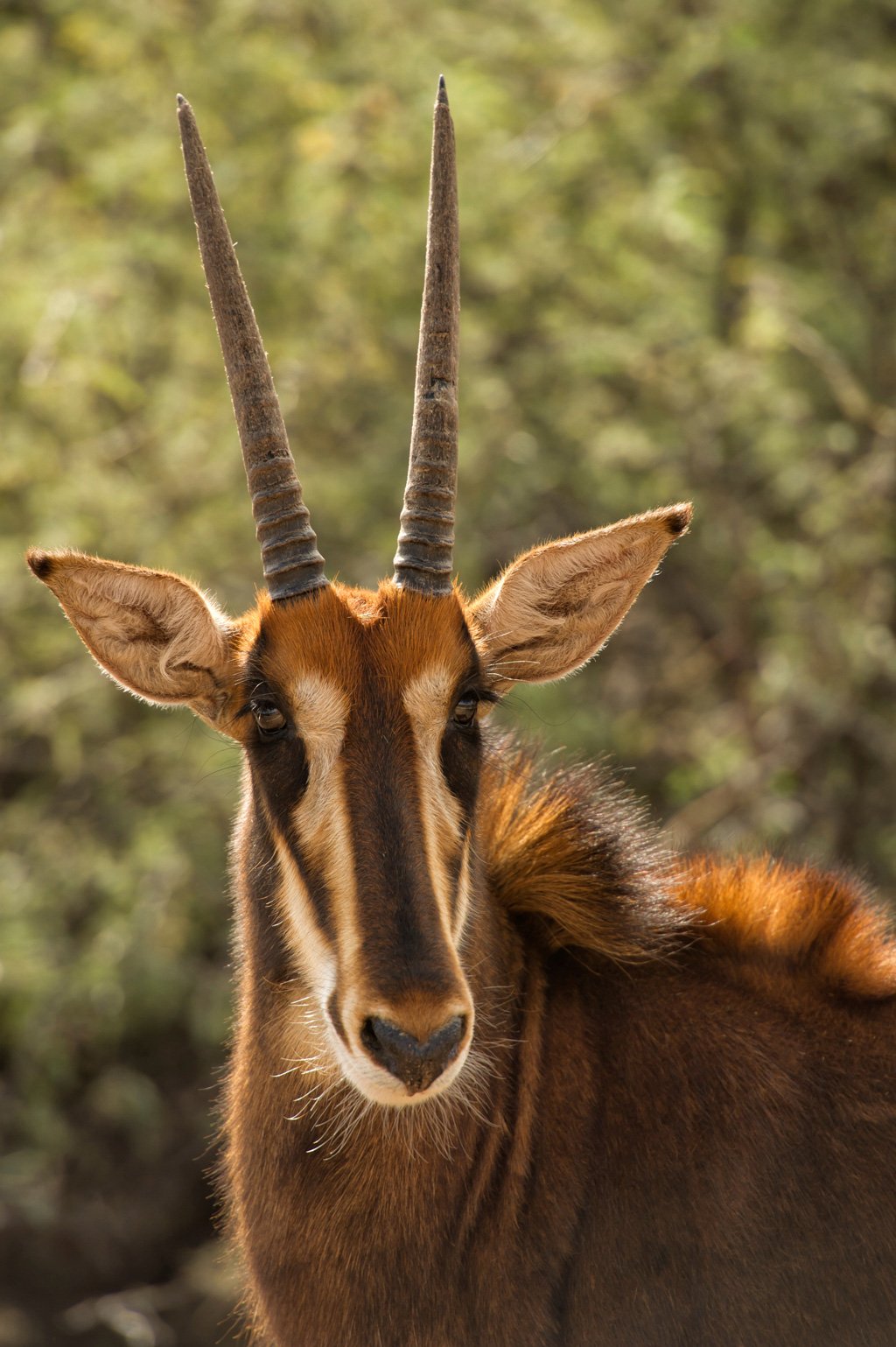Sable Antelope
Meet Nairobi
Sable Antelope
Personal Info
Roaming the Masai Mara preserve at Out of Africa Wildlife Park, Nairobi has become the noble and wise patriarch of his sable family.

Personal Info
Roaming the Masai Mara preserve at Out of Africa Wildlife Park, Nairobi has become the noble and wise patriarch of his sable family. Today Nairobi personifies strength as the protector of the herd. However, as a foal his future was in jeopardy when he was unable to nurse due to a very unusual cold spell. Founders Dean and Prayeri Harrison brought Nairobi into their house for 7 nights, returning him to the herd during warmer daylight to remain socialized. With lots of TLC, including 8 months of bottle feeding, he has since settled into his rightful place of sentinel father of the herd. He has two wives, Tanzani and Swazi. To this day Nairobi still comes when called. While most people know Nairobi as the capital and largest city of Kenya, Nairobi’s name comes from the Maasai phrase Enkare Nairobi, which translates to “cold water,” the Maasai name of the Nairobi River, which lent its name to the city.
Habitat
The sable antelope is found in the southern savanna of Africa from Southeastern Kenya, Eastern Tanzania, and Mozambique to Angola and Southern Zaire, mainly in the Miombo Woodland zone. They prefer woodlands and grasslands and avoid extensive open lands.
Physical
Sable antelope can weigh from 330 to 600 pounds. This large species ranges from 46 to 56 inches tall at the shoulder and measures 75 to 100 inches long, not counting a tail of 15 to 30 inches.

Physical
Sable antelope can weigh from 330 to 600 pounds. This large species ranges from 46 to 56 inches tall at the shoulder and measures 75 to 100 inches long, not counting a tail of 15 to 30 inches. The males are slightly larger than females. Females are chestnut to dark brown, darkening as they mature, while males are very distinctively black. Both sexes have white underbellies, white cheeks, and white chins. They have shaggy manes on the back of their necks. Sable antelope have ringed horns which arch backward. In females these can reach nearly 3 feet, but in males they can reach almost 4 feet and are significantly more curved than those of females. Sexual maturity is achieved at 2-½ years of age for both males and females.
Life Cycle
Sable antelope typically live 16 years in the wild and up to 19 years in captivity.

Life Cycle
Peak mating activity occurs in June, and after a gestation period of 8 to 9 months, females typically give birth to a single calf at the end of the rainy season, at a time when food is abundant and the long grass provides sufficient cover. After birth the calf will remain concealed for up to 3 weeks, hiding from predators. The calf is weaned from its mother after 6 to 8 months. Males are subordinate to females until they get bigger. Sable antelope typically live 16 years in the wild and up to 19 years in captivity.
Diet
Sable antelope graze on a variety of short grasses abundant during the growing season and survive by browsing on herbs, bushes, and trees during the hard dry season.

Diet
Sable antelope graze on a variety of short grasses abundant during the growing season and survive by browsing on herbs, bushes, and trees during the hard dry season. Sable antelope have a ruminant digestive system, meaning they chew, swallow, regurgitate, and chew again to aid in digestion.
